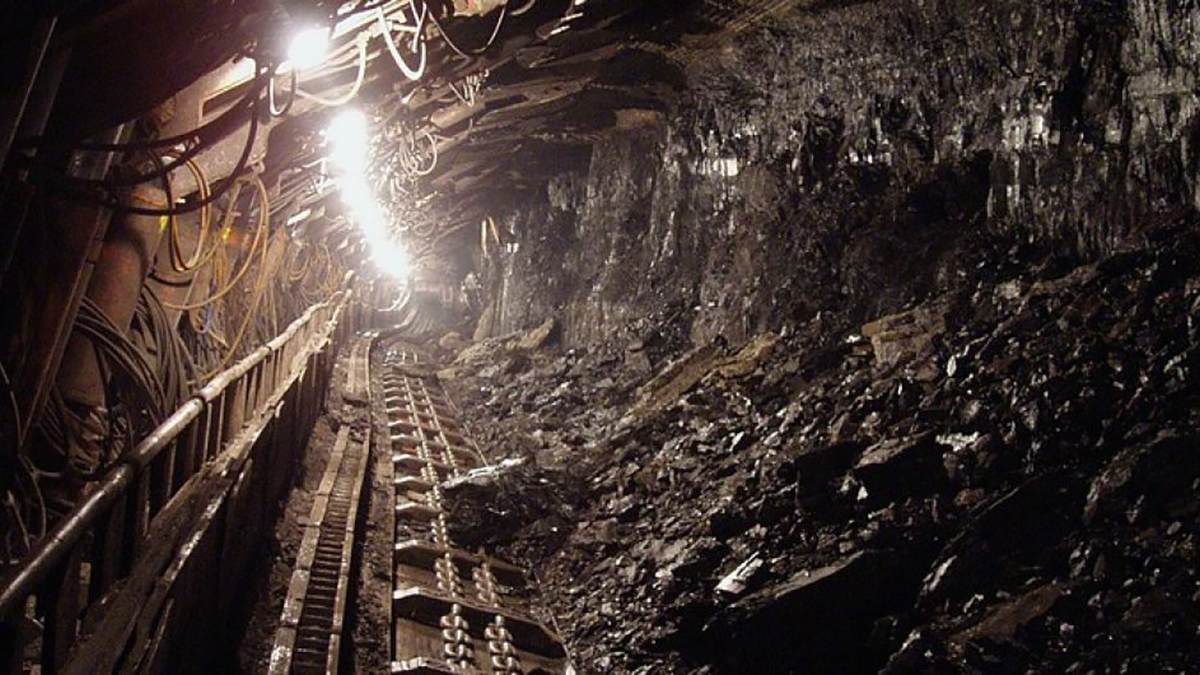Reform of the coal sector: where are concrete plans?
What needs to be done first in order to start solving problems of the coal sector.
Attempts to reform the coal sector were made ever since Ukraine gained independence. Among the recent attempts coming to mind is the one made in late 2017, when the-then Prime Minister Volodymyr Groysman gave three months to prepare a step-by-step plan of reforming the coal sector. Two years earlier, Arseniy Yatseniuk demanded that the minister concerned presented his vision of reform. There were enough declarations, but a look at the website of the Ministry of Energy and Environmental Protection would reveal almost no information about a concrete plan of reforming the coal sector.
The President about reform of the coal sector
In Ukraine, the coal sector must be reformed by 1 May – that was the task President Volodymyr Zelensky gave last year to Energy Minister Oleksii Orzhel.
“If the government has transformation of the coal industry in general, plans will come first; then, we will discuss them with the society, and then, we will talk to coal miners,” the President said, adding that when discussing the plan of reforming the coal sector, it would have to be decided which state-run coal mines will undergo modernization.
“If, unfortunately, a particular coal mine won’t be upgradable, we will have to find another job for the people; the government will have to provide one which pays the same salary or better, not lower,” Mr. Zelensky said.
Good intentions of the Ministry of Energy and Environmental Protection
In November 2019, the Ministry of Energy and Environmental Protection planned to present a new concept.
“The Ministry of Energy and Environmental Protection is launching reform of the coal sector. Only efficient, self-sufficient mines must continue to operate. Very soon, we will present our concept for further development of coal mines,” Minister Oleksii Orzhel wrote back then on Facebook.
The task was set but was not accomplished, becoming inherited by the new Cabinet of Ministers with Denys Shmyhal at the helm.
The new PM showed understanding of the coal sector’s problems, which at the time of his appointment were too many to count. Take, for example, overdue wages which as of 1 March 2020 reached the UAH 1.6 billion mark. It is worth adding that in early March, the government allocated UAH 654 million to settle outstanding wages due to coal miners working at nine enterprises.
“Our energy sector needs coal. The market situation is difficult. The gas price will continue to decline until summer, and the situation won’t be improving. It’s a big challenge,” Mr. Shmyhal believes.
“As of today, 65 cities in Ukraine are completely dependent on the coal industry: coal production or thermal power generating enterprises. Therefore, delays with reforming the coal production sector cause the increasing number of unproductive subsidies,” the Prime Minister said.
Moreover, the production output of state-run coal mines in Ukraine has declined almost twofold, while the subsidy per ton of coal increased almost 3.7 times. In particular, between 2016 and 2019 the production output went down from 6.7 million tons a year to 3.5 million tons a year. At the same time, the subsidy per ton of coal went up from UAH 246 in 2016 to UAH 908 in 2019.
However, the Cabinet of Ministers does not want to close down prospective mines where coal can be produced.
“If a mine is promising, if it can produce Ukrainian coal for Ukrainian power stations, we are not even talking about closing it. We have 33 state-run mines. There are naturally promising ones, and there are naturally unpromising ones, being in operation for 50-60 years,” Denys Shmyhal said.
He further said that the mines where production is nearing an end will be closed down in a natural way. There are presently not many mines of this kind, but over time, their number will increase.
“But we are not talking about closing down mines. We must talk about development of coal mining regions. For as long as I as the head of government do not have an answer where [coal miners – editor’s note] are going to work, we won’t talk about closing the mine,” Mr. Shmyhal stressed.
What about the reform program?
The Prime Minister announced that the Cabinet of Ministers is working, with participation of international partners, on a program of transforming coal mining regions.
“Today, we are working with the World Bank, with international partners on a program envisaging fair transformation of coal mining regions. The task of closing down a mine is not on the agenda. The question is what to do next with the cities supported by these mines,” Mr. Shmyhal said.
The Prime Minister pointed out that in the past, he had meetings with Ukrainian coal miners, albeit not as the head of government.
“I visited the Donetsk and Luhansk Oblasts, talked to the heads of coal mining associations. We held a large conference of coal miners. This is a long-term program, for 5-10 years, which envisages the future of this area, of workers of coal mines and their families around these enterprises,” Mr. Shmyhal added.
The government also planned to settle, over two months, the debt owed to coal miners.
“The situation in the coal sector is indeed extremely critical. We reached an agreement, and the President promised to coal miners during an all-Ukrainian conference to settle half of the debt. 654 million was remitted to the accounts. It was the first step. The other half of the existing debt will be settled the next month. But that’s extremely difficult. I won’t tell you what it costs to the government and the country,” the Prime Minister said.
Expert advices
Ukrainian coal mines and coal industry will continue to enjoy demand at least in the nearest 30 years, Ivan Plachkov, Chairman of the All-Ukrainian Energy Assembly, said in an interview to GMK Center.
“During at least the nearest 30 years, Ukraine’s coal industry will be needed. This is power station-grade coal for thermal power plants and coke coal for the steelmaking industry,” Mr. Plachkov believes.
The expert said that coal-fired thermal power plants account for approximately 37% of Ukraine’s energy balance.
“This is a serious share. Also, coal-fired power plants ensure maneuverability of the energy sector, lowering and increasing the output depending on drops and surges in consumption. It is a very important function. Even Europe builds coal-fired power plants – that very Poland and, surprising as it might be, Germany. These are low-capacity power plants, under 400 MW, which ensure maneuverability of the power system. Mass media seldom write about it, because of the dominating trend with renewable energy sources. But it’s true,” the expert said.
In his opinion, Ukrainian coal mines can be preserved by privatizing them.
“The only effective way is privatization of coal mines. The mines already privatized (although it should be pointed out that only the better mines were privatized) are profitable today. They have no problems with wage payments, production output, sales and so on. The way the Ukrainian economy is built today does not envisage efficient public management of such enterprises as coal mines. Moreover, in almost all countries they are privatized,” Mr. Plachkov emphasized.
At the same time, Mr. Plachkov believes that only a few of the existing state-run coal mines have real prospects.
“I think that among the 33 state-owned coal mines located in the government-controlled territory, only a few of them will be in demand. We have to try to privatize them. We know that they are not very attractive from privatization point of view, but the government has many mechanisms of bringing investors,” Mr. Plachkov said.
“We all understand that sooner or later, coal mines will be closed down. What should we do with coal miners? We have to organize retraining for miners, help them find a new job and gain a new qualification,” DiXi Group President Olena Pavlenko said at the discussion of energy reforms.
A requalification plan should have been presented as soon as this year, she believes. The ministry, the government, the parliament and the Verkhovna Rada’s committee concerned must decide on what requalification of coal miners should be.
At the same time, the expert emphasized, work on solving the problem of “green” tariff for renewable energy sources must be started in the nearest month. For while Ukraine remains undecided on the coal industry’s problems, the EU has already begun implementing its new strategy, the European Green Deal, by approving a plan on transition to the “green” economy, which means minimization and eventual abolition of the use of coal. And Ukraine must stay in line with this strategy, too.
For your information
Ukraine possesses approximately 4% of the world’s confirmed coal reserves. The bulk of Ukraine’s coal reserves is concentrated in two basins: Donets and Lviv-Volhynian. The Donets coal basin (Donbas) stretches over the territory of the Dnipropetrovsk, Donetsk, Luhansk and Kharkiv Oblasts of Ukraine. The number of commercial coal seams in this basin reaches 120, and approximately 65 of them are mined. The Lviv-Volhynian basin is located in the Lviv and Volhynian Oblasts.
Ukraine’s coal industry consists of the private and public sectors. The largest representative of the private sector is DTEK, an energy holding company. The largest enterprises of the public sector include Lvivvuhillia SE and Krasnolymanska Coal Company SE.









